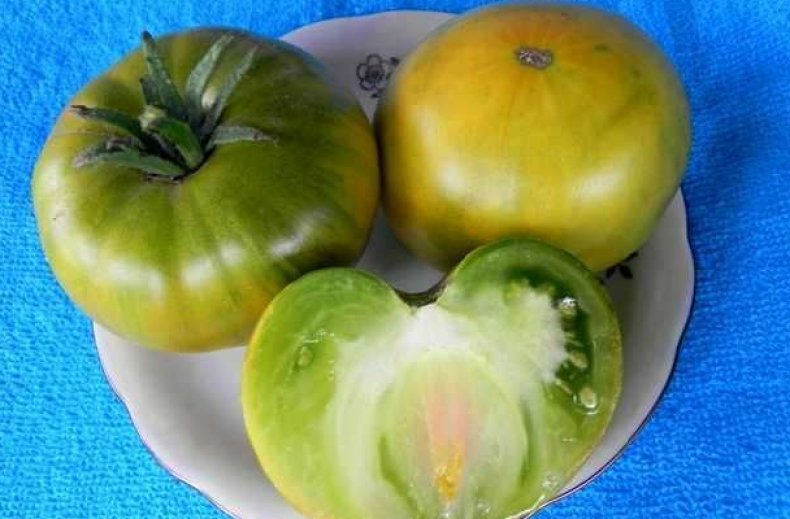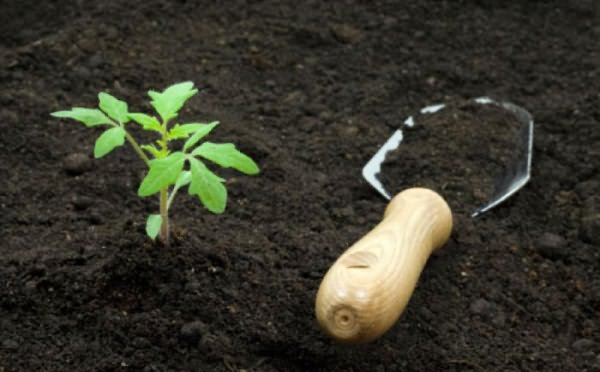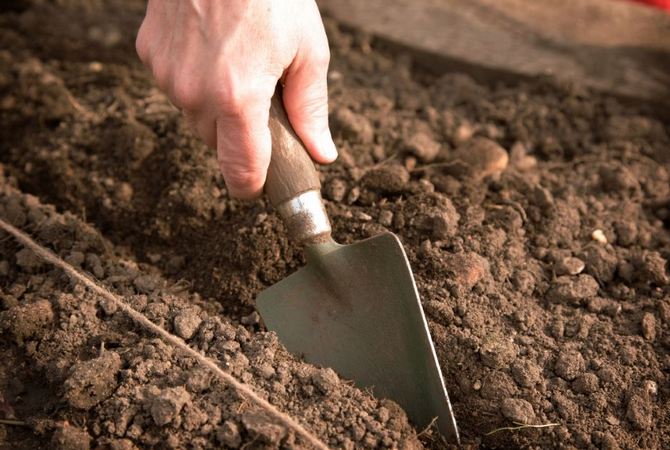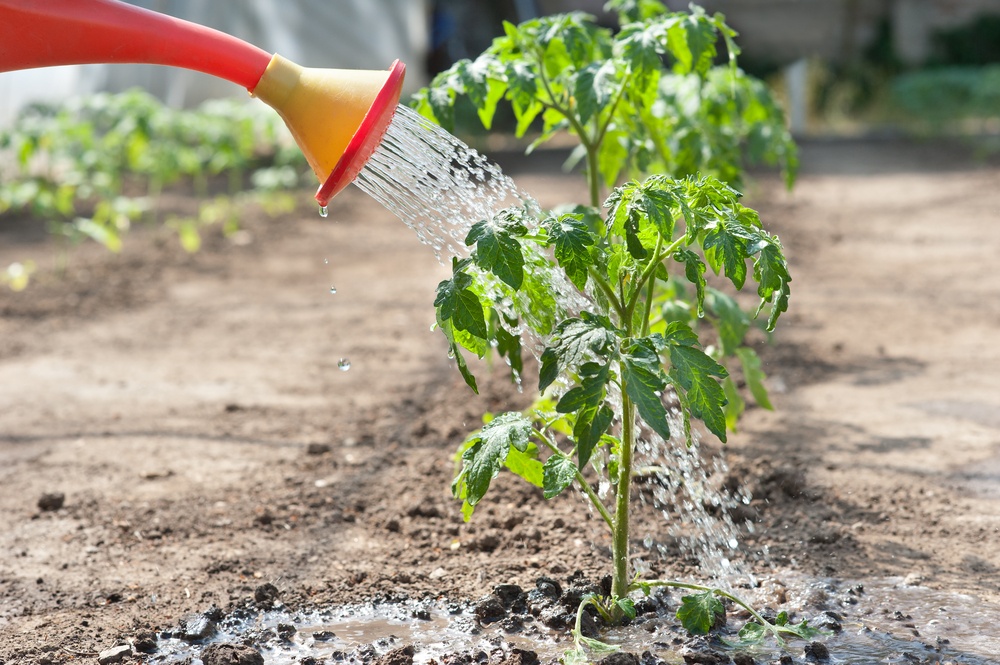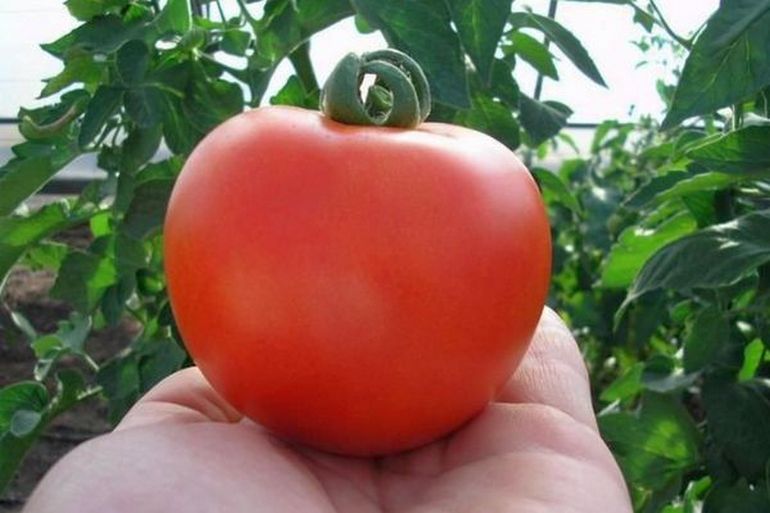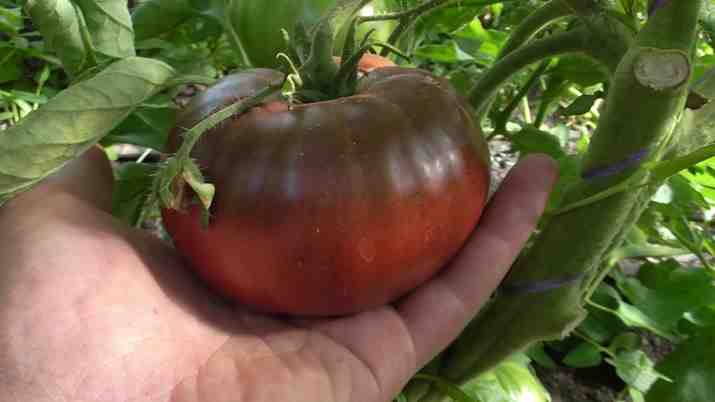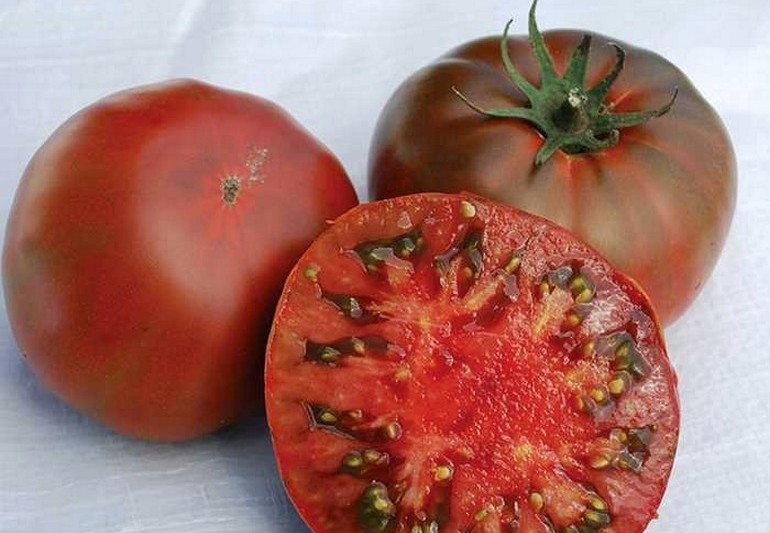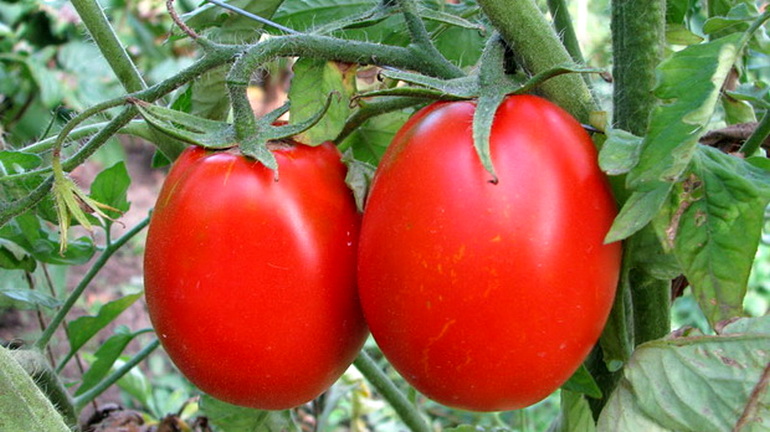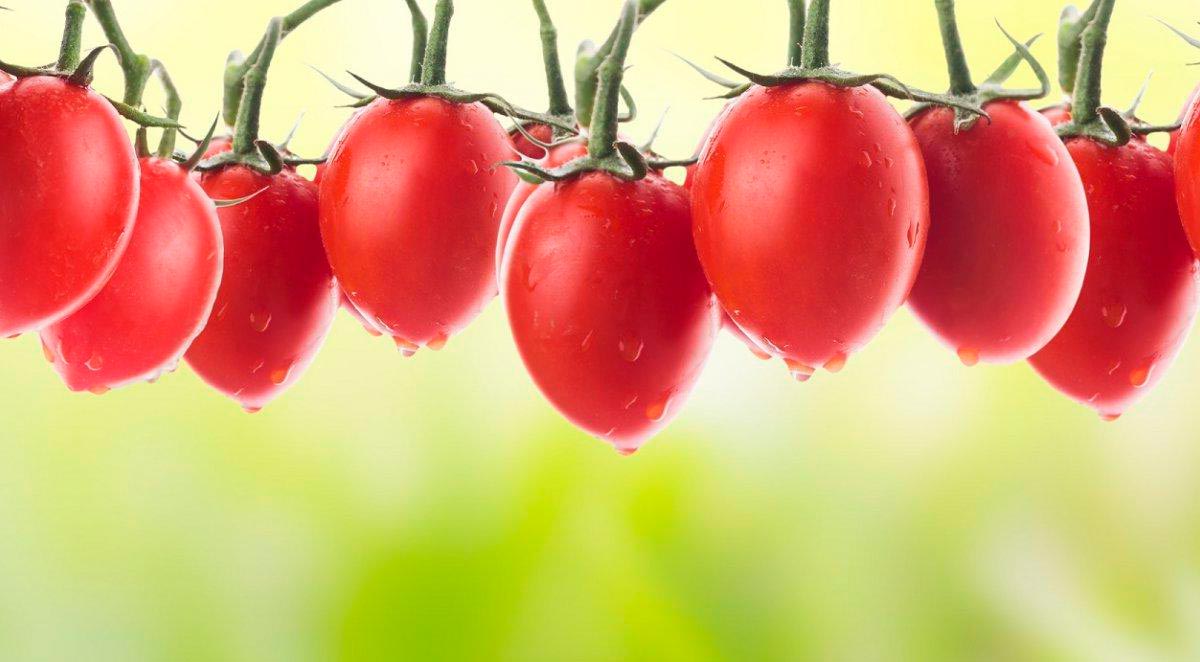Many gardeners love exotic varieties of tomatoes or flavors. For such exotic lovers, the tomato Malachite box is optimal. To get a good harvest, it is necessary to take into account the characteristics of the plant and the nuances of caring for it during the growing period.
Description of the variety
Tomato Malachite is a relatively new variety. It was created by breeders from Novosibirsk. It was first mentioned in official documents registering varieties in 2006. However, despite its youth, it has already become quite popular with gardeners from all regions of Russia, due to its attractive characteristics.
The love of gardeners for Siberian malachite tomatoes is explained by the possibility of obtaining a high yield even in unfavorable climatic conditions. This variety, according to its official description, is cold-resistant, therefore it can be grown in almost any region of the Russian Federation.
The tomato is very tall. Its growth does not stop throughout the entire growing period. In a greenhouse, the stem length can reach one and a half meters. The vegetable belongs to the mid-season category. The first fruits appear starting from the hundredth day after planting the seeds in the ground.
Giving a characteristic and description of the tomato variety Malachite box, one cannot but pay attention to the bushes. In addition to being very tall, they also have very dense foliage. The color of the leaves is very rich green. Inflorescences are formed in the form of a brush, you can see the joints on the stalk of the tomato during harvest. The ovary is formed in almost 100% of cases, which largely explains the high yield. Fruits are formed on the entire stem, therefore, it is recommended to tie up this variety of tomatoes so that the vegetables do not end up on the ground and begin to rot.
The fruits are both flat and round in shape. Malachite tomatoes have a smooth glossy surface.
amma, which once again speaks of the need for the obligatory tying of the plant.
Unripe fruits are light green in color with small streaks. As it ripens, the color changes, becomes darker, closer to malachite, for which the described variety got its name.
The pulp of tomatoes Siberian malachite is very juicy, sugar-looking, its color is emerald green. As with the skin, the flesh can be spotted with unusual patterns. The fruits have a non-standard taste with a characteristic sourness. Many gardeners say it looks like a melon or kiwi.
The number of seeds in a tomato is small, therefore, when harvesting them on your own, you should be quite careful, observing all recommendations on the technology for collecting and storing seed. The fruits have a very thin and delicate skin, which creates difficulties during transportation, therefore, this variety is not very suitable for industrial cultivation.
Tomatoes of the described variety are used mainly fresh.Due to their large size and heavy weight, they are difficult to preserve. In addition, the thin skin breaks easily when placed in a container, which also creates problems when harvesting them for the winter. But on the other hand, it can be easily removed and an excellent adjika, lecho or tomato sauce can be prepared.
If you follow the recommendations for care and cultivation, the yield of this tomato will be stable and high. From one square meter of the garden you can easily get up to 6 kilograms of vegetables, and with the greenhouse method of growing, the harvest can reach 15 kilograms.
Growing order
Specialists tomato variety Malachite box is recommended for cultivation in any climatic conditions. At the same time, like other tomatoes, it is better to plant this type of seedlings. This makes it possible for the stems to get stronger, to gain the necessary nutrients to resist diseases and pests in the open field. Despite its resistance to cold, the Siberian malachite tomato may simply not have time to ripen in 100 days, if the seeds are immediately introduced into the still insufficiently heated soil.
When choosing a date for laying seeds in a seedling container, you should follow the recommendations on the package. Experienced gardeners recommend sowing no earlier than two months before planting them in open ground.
First of all, you need to prepare the ground. It is advisable to use a special primer, but you can prepare it yourself. To do this, it must meet the following characteristics:
- It requires the presence of a sufficiently large amount of humus, which increases the fertile qualities of the soil;
- The soil should not be heavy, containing a large volume of clay and similar substances;
- The soil must be loosened to ensure oxygen access to the plant's root system.
It is recommended to disinfect the soil and the seedling containers themselves. To do this, you can use either steep boiling water or a weak solution of potassium permanganate.
The second step is seed selection. If you purchase planting material in a specialized store or from an official representative, this procedure may not be carried out, but if the seeds were harvested on your own, it is better to check them so that you do not have to plant them later.
Rejection is performed as follows. The seed is placed in a 5% saline solution. Seeds that float can be thrown away, they will not sprout. The rest can be treated with growth stimulants (both special preparations, for example, Epin, and folk remedies - aloe juice are used).
After preparing the containers, soil and seeds, you can proceed directly to planting. For this, grooves are made (the distance between them should not be less than 3 cm), and the seeds themselves are laid to a depth of about 1 cm with a distance of 2 cm between each other.After that, the seedlings are covered with plastic on top and placed in a warm place with good lighting. Thus, an artificial greenhouse effect is created. As soon as the first shoots appear, the film must be removed.
To form the root system of the plant, a pick is made. This operation is recommended when at least 3-5 leaves are formed in tomatoes. Some gardeners immediately place seeds in special containers so as not to waste time picking.
The soil in the containers should be loosened to provide water and air access to the plant roots. Also during this period they can be fed with fertilizers. They are used as special compositions that can be purchased in the store, and, for example, wood ash.It is also not worth feeding too much, otherwise the tomato will grow into the stem, which will lead to a decrease in yield.
Before planting in open ground, when the ambient temperature is at a constant positive level, the seedlings can be hardened. For this, containers with sprouts are taken out into the street. The residence time starts at 10 minutes and then gradually increases. An important condition for hardening is the absence of a draft.
Before planting (which takes place in the last decade of May - the first decade of June, depending on the climatic conditions of the region), it is necessary to prepare the land. The area for the beds should be fertilized and dug up. Then pour abundantly with warm water. It is recommended to pour the prepared wells with a solution of potassium permanganate to destroy pathogenic bacteria.
It is recommended to plant seedlings in the evening, so that by morning the stems have time to gain strength and rise. Considering the size of the fruit, 1 sq.m. it is recommended to place no more than 2 sprouts. It is recommended to immediately tie the plant to a support and water it abundantly. The next time it should be watered after three days.
The described variety should be pinned. The ideal configuration is two stems. If, after the appearance of the ovary, new flowers begin to appear on the stems, they must be cut off in order to obtain a good yield. After all, new fruits will draw away part of the plant's strength, and as a result, their size can significantly decrease.
Caring for the plant is no different from the usual steps for growing a tomato. The beds need to be watered, weeded, and periodically fed. To retain moisture, it is useful to mulch with straw, freshly cut grass or peat.
It is best to feed the plant with superphosphate, saltpeter and fertilizers containing a large amount of potassium. Tomato tolerates feeding with wood ash, chicken or cow droppings well.
Advantages and disadvantages
The Siberian malachite tomato, the characteristics and description of the variety of which were given above, has certain pros and cons. Experienced gardeners distinguish as advantages:
- High and stable yields, with fruits ripening before cold weather sets in;
- There is no barren flower, almost all flowers form ovaries;
- Non-standard taste, which allows you to make jam from fruits and surprise your friends and acquaintances;
- Unlike red varieties, the described one does not cause allergic reactions, therefore, it can be eaten by children;
- The culture contains many useful substances that are required by a person at any age;
- Tomatoes grow both outdoors and in a greenhouse;
- The plant is resistant to disease and cold.
The disadvantages are:
- Tomatoes require care (to ensure a good and stable harvest, all growing recommendations must be followed);
- Almost impossible to transport due to the delicate skin;
- They are not subject to long-term storage, while it is very difficult to preserve them;
- In the absence of experience, it is difficult to determine ripeness due to the non-standard color.
Thus, this variety should be grown by those who love experimentation, to surprise friends and acquaintances with the large size of the fruit, their unusual taste. However, for this you will have to work hard: prepare the soil and seeds, grow and plant seedlings, and then follow the recommendations for caring for the plant.

